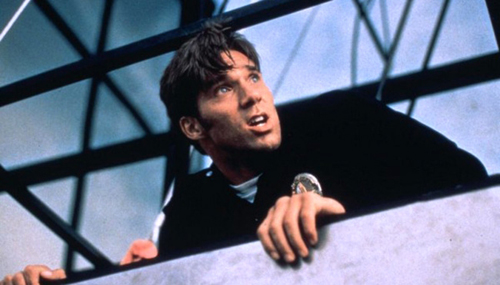
 For its early years, starting in 1995, the fledgling UPN network operated on a business model leaning heavily on cheesy, ultimately short-lived sci-fi/action series, like Nowhere Man, The Sentinel and Deadly Games. In title, concept and production quality, Dark Asset feels like one of those shows, albeit never aired and salvaged by cobbling several episodes together into a faux feature. The first hour is so overstuffed with flashbacks, collectively introducing close to a dozen characters, that if not for the three-decade difference, my comparison wouldn’t be out of the question.
For its early years, starting in 1995, the fledgling UPN network operated on a business model leaning heavily on cheesy, ultimately short-lived sci-fi/action series, like Nowhere Man, The Sentinel and Deadly Games. In title, concept and production quality, Dark Asset feels like one of those shows, albeit never aired and salvaged by cobbling several episodes together into a faux feature. The first hour is so overstuffed with flashbacks, collectively introducing close to a dozen characters, that if not for the three-decade difference, my comparison wouldn’t be out of the question.
Total charmer Byron Mann (2018’s Skyscraper) stars as calm, cool, collected John Doe. He’s ex-Special Forces — “a soldier’s soldier,” we’re told — and the latest recruit for a shadowy super-spy operation in which Dr. Cain (Robert Patrick, Terminator 2: Judgment Day) shoves a microchip into the brain. Said chip allows Dr. Cain and his iPad to implant ideas into said brain — not quite control, but the power of suggestion.
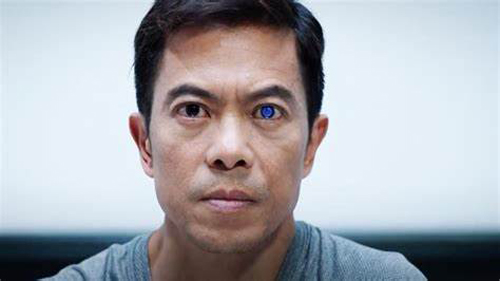
Should’ve gone with control, Doc! Doe disobeys orders and punches, kicks and chops his way outta the lab and to a hotel bar where he meets Jane (Helena Mattsson, Species: The Awakening), a beautiful blonde in town for the requisite “business conference.” As with writer/director Michael Winnick’s superior Guns Girls & Gambling, his camera loves — and I mean loves — Mattsson. If you’ve ever wanted to see her fight open-bloused, may I direct your attention to Dark Asset.
But it’s not likely to keep it. With a two-thirds-in twist you’ll guess upon Clue One, the structure of John Doe telling most of the movie’s story to Jane with constant cutaways that show it — flashy cars, pulsating lights, fisticuffs with swarthy bizmen — interrupts any gained momentum, if not derails it. The flatness of digital video doesn’t assist Winnick in achieving his B-pic vision; ergo, the UPNity of it all. At Dark Asset’s best, the Mann-as-machine fight scenes, I was reminded of Jet Li’s similarly action-driven The One; at its worst, well, UPN’s The Burning Zone, I guess? —Rod Lott

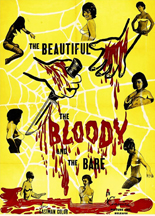
 For nearly an hour of its hour,
For nearly an hour of its hour, 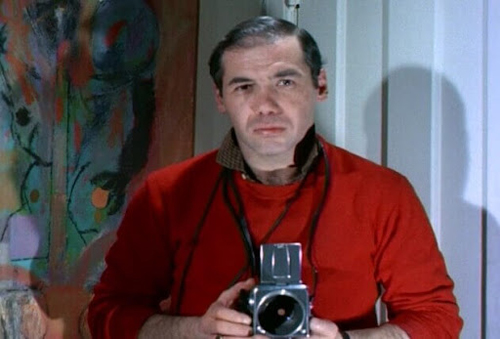
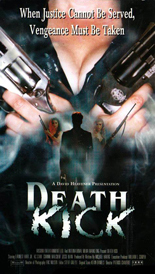
 Give
Give 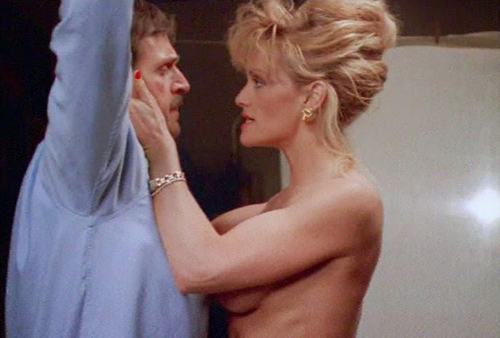

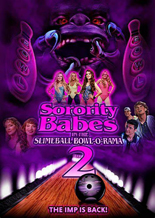
 Fans of the VHS classic
Fans of the VHS classic 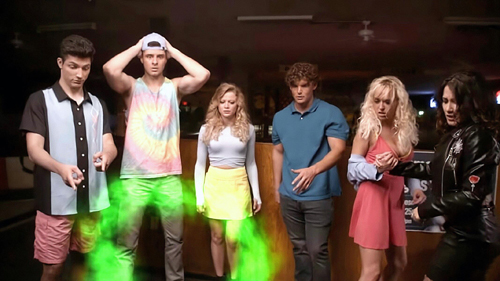
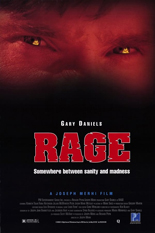
 In a right-place/wrong-time scenario, family man and schoolteacher Alex Gainer gets kidnapped by an enigmatic tech company secretly developing a super-soldier serum. After injecting illegals in this clandestine experiment, the firm moves to perfect physical specimens like Gainer, seeing how he’s portrayed by British kickboxer and American straight-to-video action hero Gary Daniels.
In a right-place/wrong-time scenario, family man and schoolteacher Alex Gainer gets kidnapped by an enigmatic tech company secretly developing a super-soldier serum. After injecting illegals in this clandestine experiment, the firm moves to perfect physical specimens like Gainer, seeing how he’s portrayed by British kickboxer and American straight-to-video action hero Gary Daniels. 